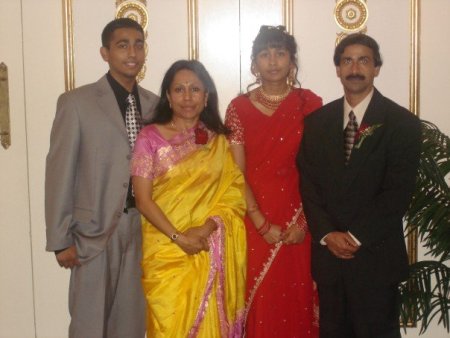From The Peopling of New York City
While tradition and custom reign in native countries of South Asia, how do they fare when Indians, Pakistanis, Bangladeshis, etc. immigrate to America? What is held on to, and what gets "replaced" by American culture? Immigration to a foreign country is undoubtedly a difficult experience, no matter from where the transition is made. In doing so, family traditions risk getting lost. Certain traditions (or possibly "cultural habits"), such as living in large, extended families and having an arranged marriage, may get replaced by American ideals about nuclear family housing and marriage for love. Other times, there is a change in ideology. For example, an Indian or Pakistani teenager may desire more autonomy and privacy than his immigrant parents are willing to give him. The generational gap for children of South Asian immigrants may be greater than for kids with American parents, for they have to overcome not only differences due to age, but also those due to a different cultural upbringing. This could mean listening to different kinds of music, watching different kinds of television programs, spending time with non-Asian friends, or dropping the native language. All of these cultural pressures put stress on the family to keep up customs, and risk them being lost in the noise of America. As this happens, families may move further apart, due to the lack of connection typical of traditional South Asian families.
A similar story is found in Sunita, an Indian immigrant and owner of Shri Krishna Jewelers on 74th Street of Jackson Heights. The Interview with Sunita reveals the other side of the family question: the parental side. Even though Sunita had a traditional upbringing in India (with an arranged marriage), he, too, is comfortable with America and its influences on his children. He, like many other South Asian immigrants, is confident in the way he raised his children. He explained that throughout his kids' childhood, the family was very close, including yearly trips to India. "We gave them that teaching. We [the parents] go to the same places as the kids, and so we spend a lot of time together," said Sunita. At the same time, Sunita never pressured his children to go into a certain profession, and allowed them to go away to college as well. Sunita has a "big picture" idea about the way to keep his family close. He has found a way to balance his Indian customs with his kids' American desires, and has been quite happy with the results. His example, in addition to Jeffin's, shows the coming together of cultures in America. There is not necessarily a blending of the cultures, but more like a cohabitation. The availability and openness of South Asian parents, in these cases, seem to determine the relationship between child and parent, without having to sacrifice the attachment to South Asian culture.
